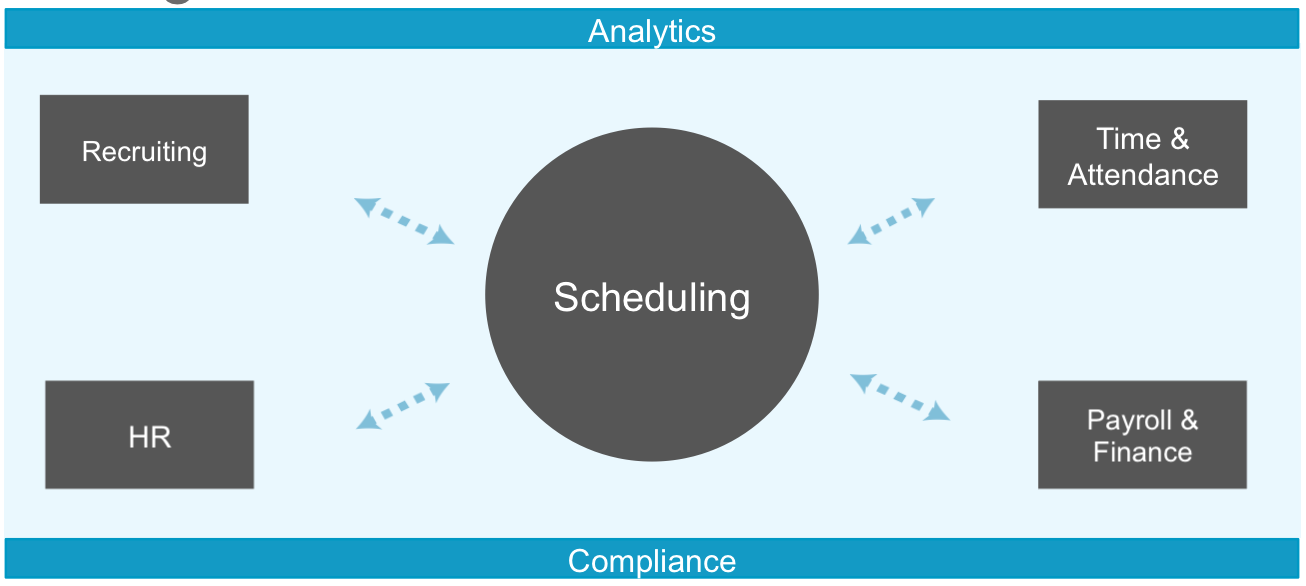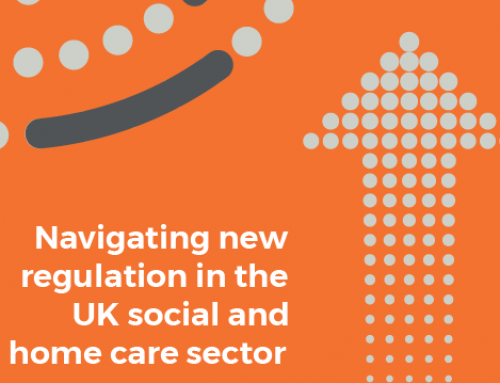The discipline of workforce management is perhaps 50 years old. If you’re looser with the definition, you may go back to the days of the Ford Model T. But that means it’s at most 110 years old. But the modern definition dates to the Y2K era and its proliferation of ERP systems. That’s really the first time we collectively started thinking about using technology to help with managing our workforces in context with the work being done.
Being built around an ERP meant that it was naturally linear and quite silo’d. If you think of the way ERPs transformed manufacturing in the 90s and 00s, you can quickly see how applying that to workforce management would lend itself to an efficient model for linear process but with each step in its own silo with its associated technology.

After onboarding new workers and creating records for them, employers would then schedule them to work, almost certainly sticking to a static model of shifts. The worker would then be responsible to capture time and attendance– typically on paper or through an old fashioned punch clock–and that would be processed into payroll for workers, and (for agencies) invoices to clients. At the end, compliance issues would have to be addressed well after the fact. Integration between these processes and the technology supporting them could be simple and one-way.
You follow the data from step to step, which is methodical, but then you have to manage changes after the fact and address compliance concerns even later. And that’s probably fine for full-time desk-based employees in most industries, or even those we think of as gig economy workers like remote designers and developers. But it doesn’t cut it for dynamic workers.
You need to be more agile and you need your processes and technologies to be working together. With years of experience in complex hourly workforce management, we recognised that and architected our platform differently. As opposed to the linear model of earlier generations, this creates a hub and spoke model with scheduling at the heart of dynamic workforce management. Because in this environment what could matter more than knowing who, what, when, where, why, etc.? But we also built it so that the scheduling engine is in constant communication with the other processes and technology, such as payroll or recruiting, for example. And because Sirenum was built like that from the beginning, it works well with a broad set of existing technologies, which has been key to our success.

With this in mind, a paradigm shift is imminently needed. It’s time for employers of dynamic workers to evolve towards a more agile and proactive way of workforce management. The shift information–who, what, why, where, when, for whom, and for how much–and the tools needed to collaboratively manage that information in real-time must be at the heart of an employer’s operations. No more silo’d or linear thinking–because work doesn’t happen linearly or in silos.
But more than just a better process, the technology needs to reflect this mentality. It needs to be open to other existing technologies. It needs to allow data access easily, in real time and without concern for the direction it flows. Thus, integration in this new paradigm is not just a way of getting data from one place to another–it’s an overarching philosophy.
If you want to see how Sirenum can help you adopt this new paradigm, request a demo today.






Leave A Comment